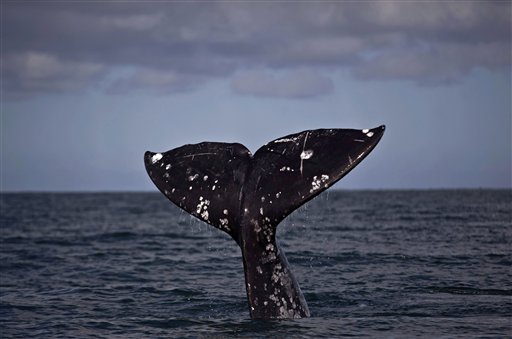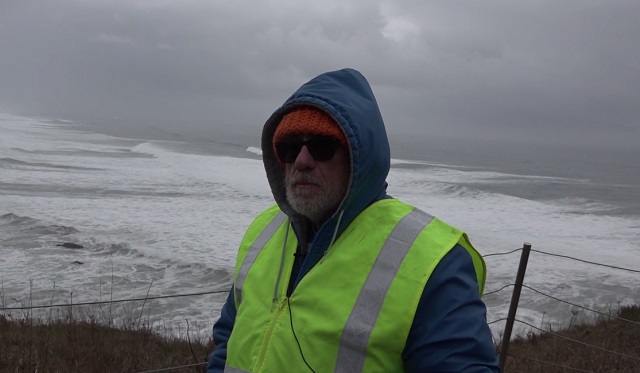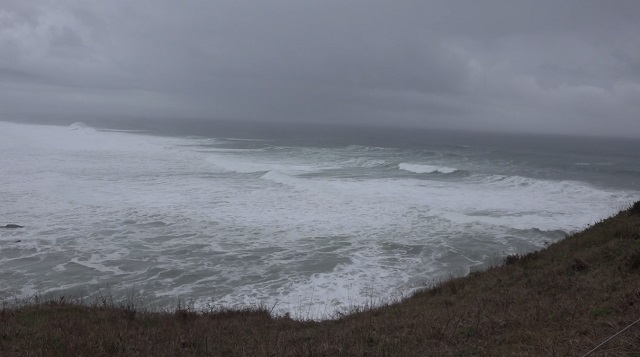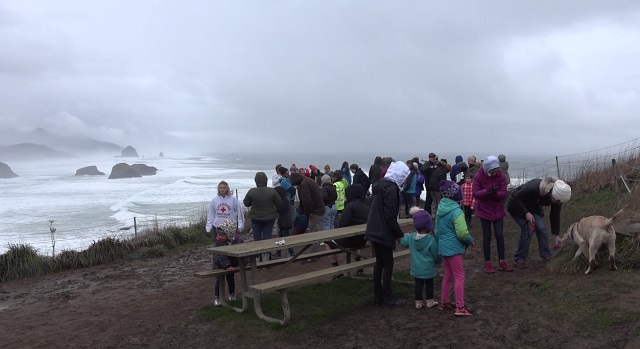PORTLAND, Ore. (KOIN) — At the end of each year, nature puts on a spectacle that draws people to the Oregon Coast from around the world.
Thousands of gray whales travel south from their feeding grounds around Alaska to the warm waters of Baja California and swim past Oregon starting in late December.
The migration itself is a quiet affair, easily missed if you don’t stare toward the horizon with the express intention of spotting a faint spray of seawater.

A program called Whale Watching Spoken Here works to bring the attention the event is due.
The program was started in the late 1970s by Don Giles with Oregon State University’s Hatfield Marine Science Center in Newport. By counting gray whales as they migrated past Yaquina Head, Giles and his colleagues confirmed the number of gray whales off the Oregon Coast peak twice a year: once around Christmas and again at the end of March. And those peak migration times happen to coincide with holiday and spring vacations.
“Somebody put those two together and decided, ‘Oh! Why don’t we have a public program to connect with the people at the time that they’re on the road and the whales are going by?,'” said John Markham, a long-time volunteer with Whale Watching Spoken Here.
He’s one of dozens of trained volunteers positioned at exceptional whale-watching sites up and down the Oregon Coast during each migration event to educate the tens of thousands of visitors hoping to witness the whales’ passing.

Friday marked the first day of the program’s winter whale watch.
“This is the greatest part of the migration. They’re in greatest frequency right now, this part of the year,” said Markham, who was stationed at Ecola State Park near Cannon Beach.
Markham said experts estimate upwards of 27,000 gray whales live in the Pacific Ocean, nearly all of which migrate past Oregon.
“There are a few, maybe 200, that stop in Newport and Depoe Bay farther south but almost all of the whales go by here, both north and south. That doesn’t mean necessarily they’re in close enough for us to see them.”
Typically, about 30 whales can be seen each hour during the peak winter migration days. But stormy weather made spotting any whales difficult on Friday.
“What we see first is the spout,” Markham explained. “And not only is the fog interfering but the wind dissipates the spout very quickly when there’s this much wind.”

The likelihood of spotting one of the 30-ton marine mammals was also diminished by rough surf along the shoreline.
“The whales evidently use the surf as a cue to where the shoreline,” Markham said. “So a whale going south, all it has to do is keep the sound of the surf in its left ear and it makes it all the way to Mexico. But when the surf is this heavy it can be out quite a ways and hear it. If the surf was very quiet, the whales would have to come farther in in order to hear the surf.”
Still, Markham was surprised by the day’s turnout.
“For whatever reason we’re attracting a lot of people and I hope we’re able to give them some information, even if we’re not seeing the whales,” he said.

The winter whale watch lasts through Tuesday, Dec. 31. The spring whale watch runs March 21 through March 29.
Visit these 24 Whale Watching Spoken Here locations